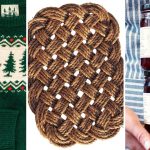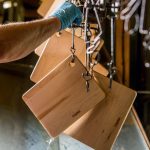The Spirit of the Birchbark Canoe | Open Studio
Steve Cayard’s artistic creations draw on Wabanaki craftsmanship and a deep respect for nature.
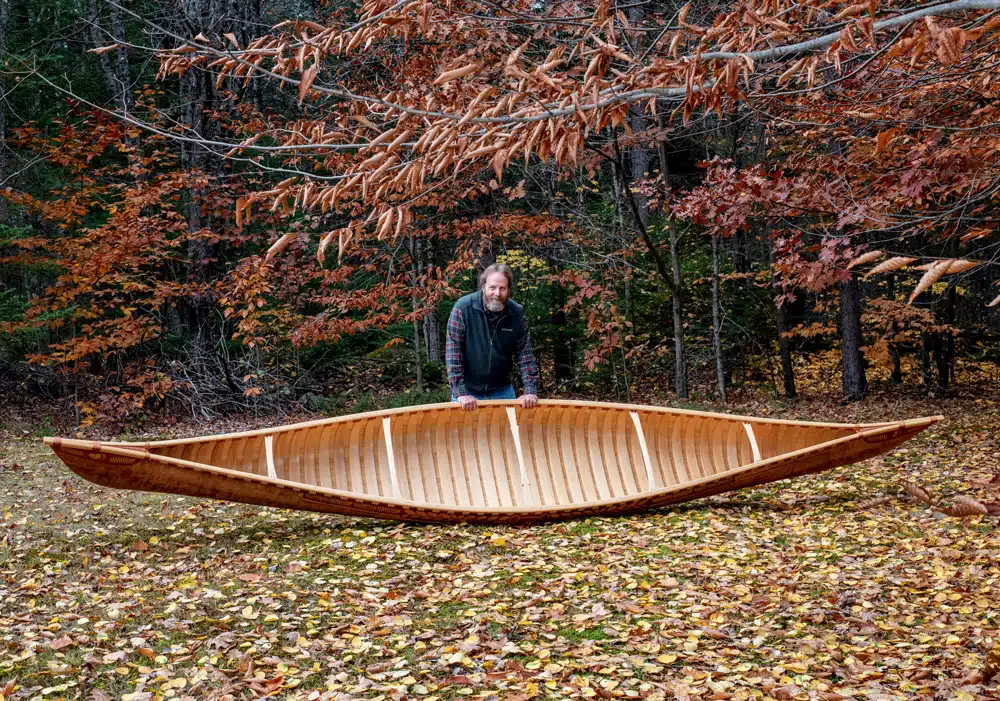
Coffee By Design | Portland, Maine
Photo Credit : Katherine Keenan
It is impossible to look at one of Steve Cayard’s birchbark canoes and not hear music.
The curving interior ribs are like echoes, ringing down the length of the canoe, and the body of the canoe opens up like a whole note, full and throaty.
The canoe in question, Denizen, is heading off from Cayard’s workshop in Wellington, Maine, to its new home in Massachusetts. It is 19 feet long, its bark is exceptionally thick, and the side panels—those swaths of winter bark whose reddish interior can be scratched to make designs—are decorated with images of bear paw prints, beech leaves and nuts, polypody ferns, and a bear face peering up through the bark.
Perhaps it is so harmonious because it coalesces from the forest floor itself, and is stitched together by hands as familiar with birchbark as they are with the spruce roots that lash it together and the springy cedar that forms those curving ribs. Cayard’s canoes are based on decades of studying traditional Wabanaki craftsmanship from books, old photos, and museum pieces, his work reflecting the expertise and style of the Passamaquoddy, Penobscot, and Maliseet tribes of Maine and New Brunswick. All this, paired with a deep knowledge of the woods.

He is good enough to work with notable museums to help “stabilize” their birchbark treasures, and he has built 33 canoes on his own; another 23 in group projects. He figures it takes an average of 500 hours to create a canoe—once all of the materials have been collected.
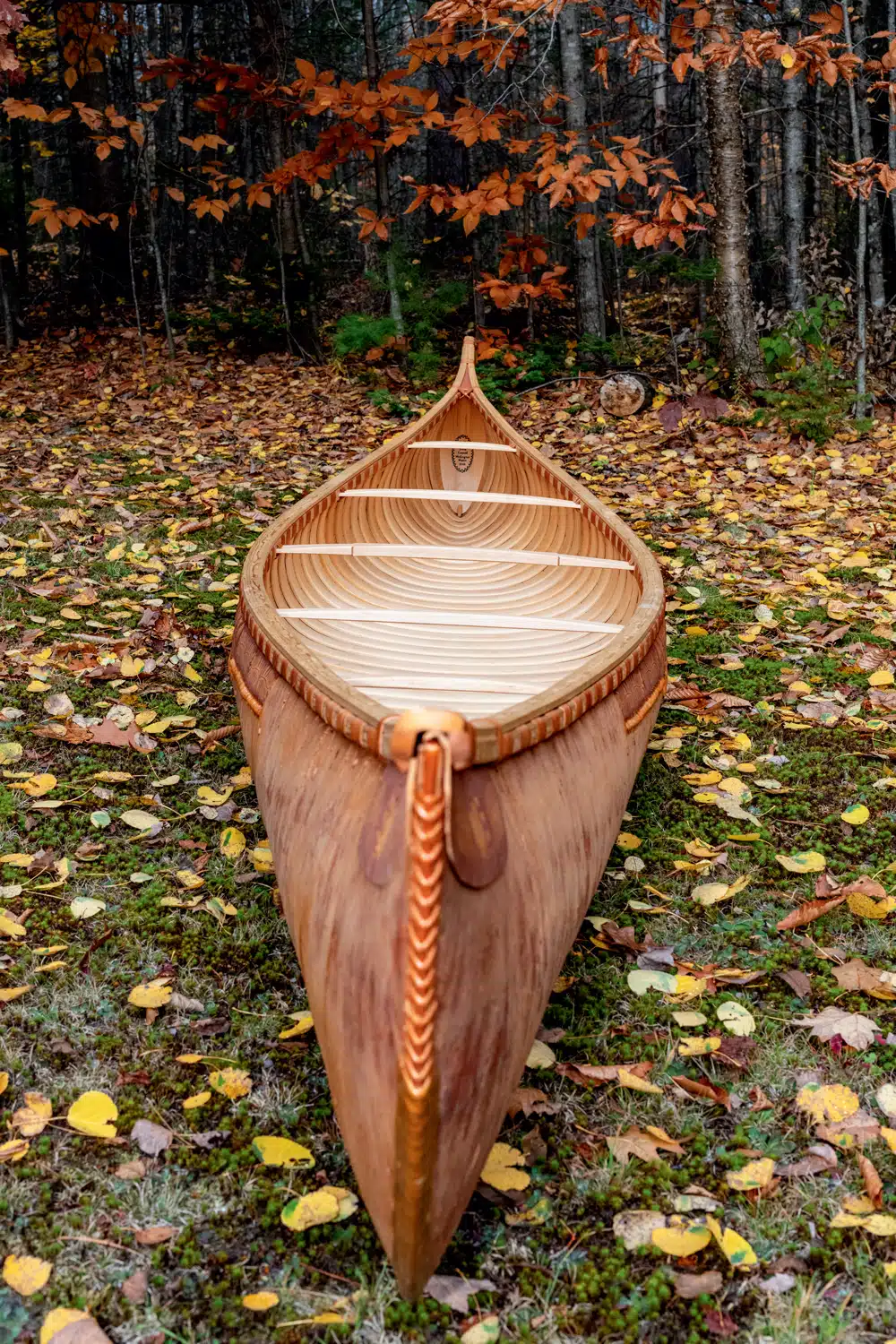
“Given the thousands of years that went into developing Wabanaki hull design, it’s hard to improve on it,” says Cayard, 65, from his workshop, located about an hour northwest of Bangor. The hand-built structure, its interior clad in white pine and the air fragrant with cedar, is tucked onto a six-acre patch of land dotted with other weathered buildings, where he and his wife, Angela, have lived off the grid since 1987.
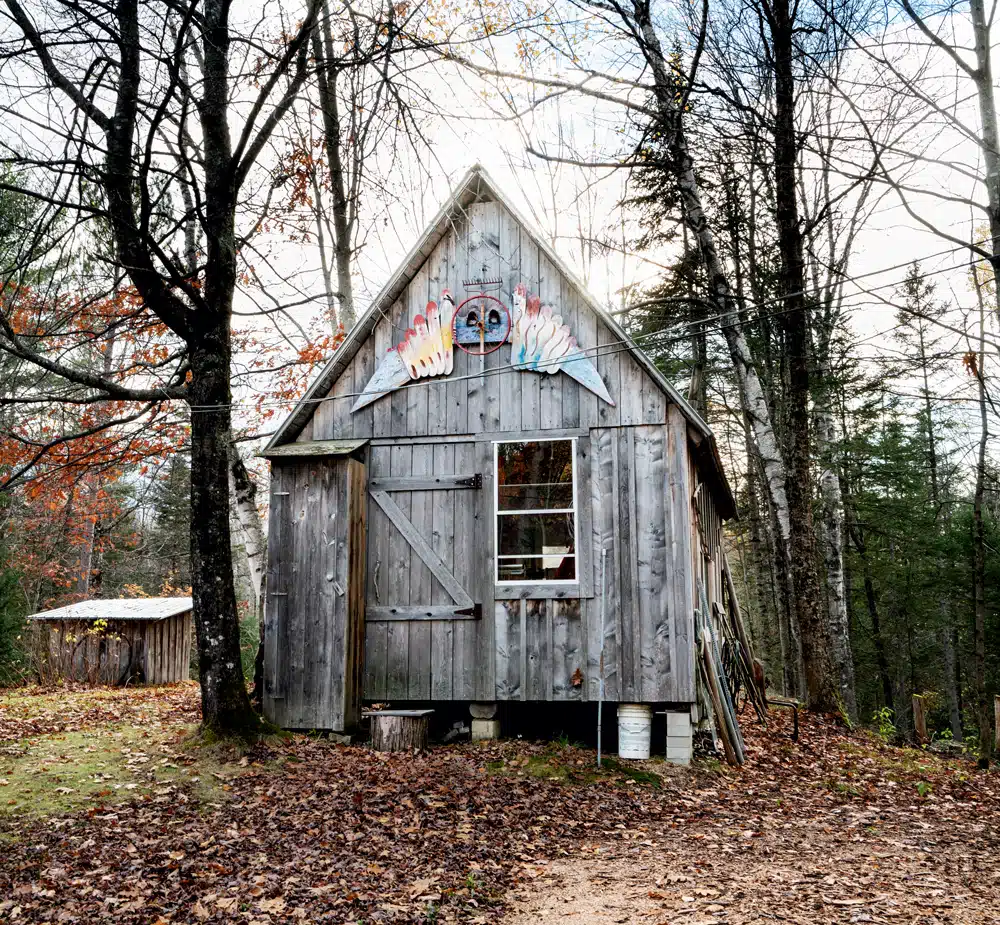
Warmed by a woodstove and a flannel shirt, his reddish beard infiltrated with a patch of winter white, Cayard hunches at one end of the shaving horse he built to be portable, for easier transport to workshops. Ingenious and simple, it is both work surface and vise—a traditional European woodworking tool used by colonists and adopted early on by Indigenous communities.

But it is the “crooked knife,” wielded with a sure hand, that sparks imagination. A traditional Native hand tool, it cuts and shapes the wood as if the two are partners in conjuring a canoe. Tight curls of shaved cedar drop to the floor. The wood smooths out. “It’s a very efficient way to carve wood, using the bicep for better depth of cut,” Cayard says, pulling the blade toward himself, a defiance of every usual rule of knife use.
His hand tools are old, well cared for, some made by himself and others handed down. One knife stands out among the others, a face carved into its dark handle. It was a gift from an Abenaki friend, he explains, and the face represents Gluskap, a traditional hero-creator in Wabanaki stories. “His lips are puckered,” Cayard points out, “because he’s blowing life into the canoe as it’s being carved.”
In fact, that is how it feels.
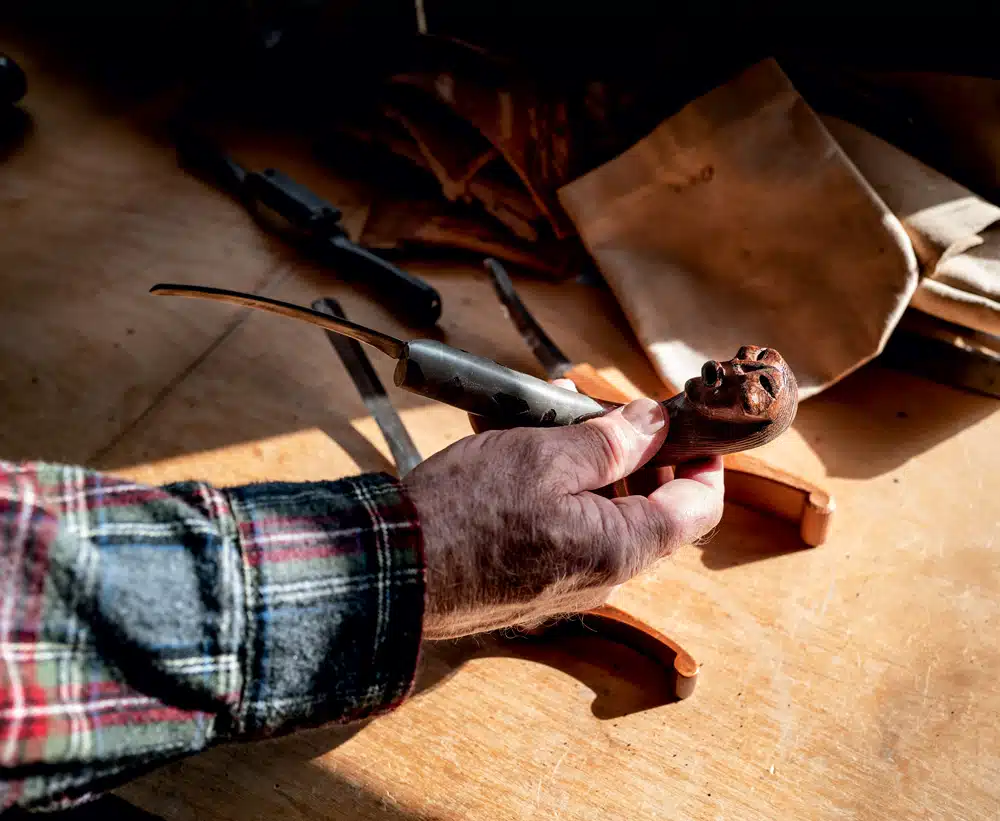
Right now, it’s hard to imagine a more fitting way to drift off into the natural world than kneeling on the floor of this birchbark canoe. Wabanaki canoes are fast under paddle, according to Cayard, yet very stable. They float high, with a lot of natural buoyancy, and are extremely responsive to steering. “It’s hard to describe how it feels in the water.” He searches for the words. “It feels like nothing else.”
When asked how one becomes a builder of birchbark canoes, he says, simply, “It started with love of nature, and spending a lot of time in the woods.” Growing up in West Virginia, he dropped out of high school after his junior year and headed to Maine, which somehow “seemed more like home than where I grew up.” He took odd jobs, but mostly he spent time in the woods, in libraries, in museums. “I was always interested in ways of living off the land, edible plants, learning from experience. It led me to the study of traditional Native culture.”
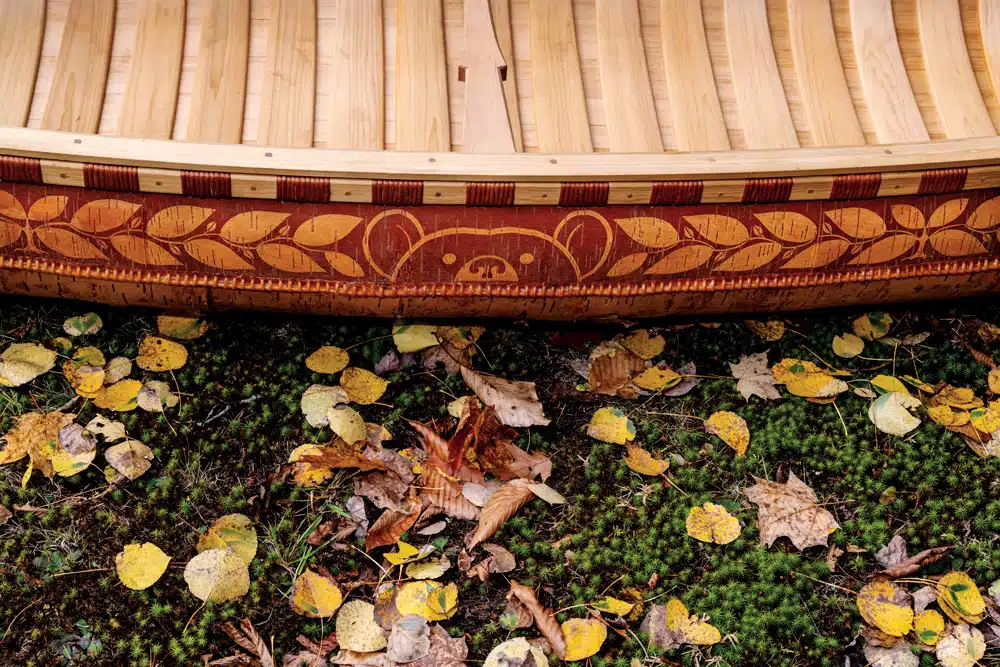
He built his first canoe when he was 22. By 1996, he was proficient enough to teach workshops at the Wooden-Boat School in Brooklin, Maine, where for six seasons he guided students in building a canoe from scratch. At the end of each workshop, one lucky student would win a drawing and go home with the canoe.
But for Cayard, his experience changed when Barry Dana, then chief of the Penobscot Nation on Indian Island, in Old Town, Maine, asked him to lead a birchbark canoe workshop on the reservation in 2002. “When I started working in the Native communities, it was just more rewarding,” Cayard says. “This was something that the communities understood, even if it was dormant. It meant a lot.”
That understanding is evident in the film Agwiden, by D’Arcy Marsh, documenting the 2002 workshop. In it, we see Cayard size up a birch in the forest—it must be just right. He scales the tree, removing the bark in one impossibly long piece with the help of the men below. Red spruce roots are unearthed and untangled, to be boiled and peeled for the lashings. Step by step, the canoe builders curve the single sheet of bark into a rough shape, add side panels, split cedar to make ribs, hone and whittle with drawknife and crooked knife, and fit plankings together to finish the interior. A week after they start building, they launch the canoe, drums beating like hearts. Everyone gets a turn paddling. “To launch at Indian Island was an emotional experience,” he says.
Each tree is different. “I interact with each one on its own terms,” Cayard says, quietly. “Spirituality is a hard thing to pin down, but it’s definitely there, and a relationship with forest, land, trees. There’s a long-standing tradition of that spiritual connection in Native communities, and I appreciate that. It’s moving to me in a way I can fully appreciate because of my own connection to the natural world.” He admits, “I do talk to the trees.”
Steve Cayard’s commissioned canoes are $1,000 per foot; for more information, go to stevecayard.com. To view the film Agwiden, go to vimeo.com/77745115.



